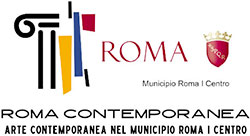A constant tension characterizes the entire pictorial oeuvre of Costanza Alvarez de Castro, in which exterior staticity and interior dynamism, three-dimensionality and two-dimensionality, hyperrealism and abstraction, contemplation and narration are contrasted. In his research, the artist aims to achieve both plastic and conceptual balance, symbolized by the central element of the horizontal line, which not only divides but also constructs space in the compositions. Alvarez offers a dual interpretation of the concept of balance: on the one hand, it represents the perfect balance of vital energies; on the other, it evokes a condition of existential precariousness, thus suggesting a profound reflection on the complexity of the human condition.
On the occasion of her second solo exhibition at Kou Gallery, the painter presents 26 works (11 oils and 15 watercolors) to the public, offering an overview of her original artistic universe, where Nature, represented by fruits and animals, is the undisputed protagonist. In the series of large compositions with fruits (papayas, melons, maracuja and pomegranates), Morandi's lesson can be traced, reworked through the use of bright colors, the cancellation of spatial depth and the monumentalization of the subjects. These elements, rather than drawing the viewer into a “silent dialogue” within the microcosm of the work, invite him to take an active part in a “lively conversation” that takes place beyond the boundaries of the painting. With these canvases, in fact, the artist offers the viewer food for thought and dialogue around the stages of life, represented metaphorically by the biological cycle of fruits, from growth to ripening to decay.
The four small oil works (La Llorona, When Birds Were Not Colored, The Spirit of Corn, A Star in the Sea) mark an interesting turning point in Alvarez's artistic journey, stemming from his study of ancient South American myths. Treasuring her work as an illustrator, she has endeavored to tell fairy tales through images, succeeding brilliantly in creating “visual transpositions” in which narrative and symbolism are harmoniously married. This is the case, for example, with La Llorona, a work dedicated to the myth of an Aztec woman who, left by her partner (a Spanish soldier), decided to take revenge by abandoning, on a full moon night, their three children on the shores of Lake Texcoco. La Llorona, regretting her act, then tried, unsuccessfully, to find her children, continuing in this desperate search even after her death, in the guise of a tormented specter. In the visual translation of this legend, the artist has succeeded in effectively restoring the essence of the story through skillful symbolic composition: the “wounded” pomegranate represents broken motherhood, the owl symbolizes the night, the glass vase recalls the full moon, and the water contained within it alludes to the lake. In this new series, Alvarez manifests a desire to reinforce the link with her South American cultural roots not only through the themes chosen, but also by means of a study of Frida Kahlo's production, particularly still lifes, from which she takes her cues both for the symbolic framework and the “exotic” color palette.
Finally, three series of watercolor plates (Endless Possibilities, My aunt is an artist and City of Cats), made as illustrations for children's book projects, are featured in the exhibition. Through anthropomorphizing animals, the artist has created cheerful and gentle tales in which she has imprinted her ideas and worldview. For example, the series Endless Possibilities - accompanied by texts by Jelena Cerović - takes the form of a small manifesto for female empowerment, encouraging little girls, through examples of working bunnies (astronauts, cellists, financial consultants, etc. ), to set no limits for themselves in planning their future careers, while My aunt is an artist is a tale dedicated to the importance of art education, in which a little squirrel, guided by his aunt, learns, through observation and play, about the work of Picasso, Rivera, Morandi and Calder, masters from whom Alvarez herself has, in part, drawn inspiration throughout her career.
With the exhibition “Aequilibrium,” Costanza Alvarez de Castro offers an evocative journey, where considerations of Nature and life, ancient South American legends and contemporary stories intertwine with each other, offering viewers food for thought on universal themes of existence and culture.



